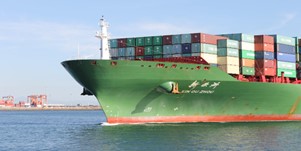By Thomas A. Cook, Managing Director, Blue Tiger International
Part 2 of a 4-Part Series
While there are numerous challenges that companies in the housewares business vertical face, there are four that dominate the export process. Manage these successfully and you’ll reduce export headaches and maximize the profitability and long-term sustainability of your export program.
The four areas are:
1. Choice of INCO Terms
2. Logistics
3. Import Clearance
4. Getting Paid
 1. Choice of INCO Terms
1. Choice of INCO Terms
INCO Terms are internationally recognized terms of sale between exporters and importers that go back over 65 years, managed by the International Chamber of Commerce in Paris, France.
Incoterms provide a universal set of rules and guidelines that help facilitate trade. In essence, they provide a common language that traders use to set the terms of their trades. Buyers and sellers can use Incoterms in a variety of activities necessary to conduct business. Typical activities that call for the use of Incoterms include filling out a purchase order, labeling a shipment for transport, completing a certificate of origin, or documenting an import or export transaction.
There are 11 INCO Term options:
Incoterms Applying to Any Mode of Transport
The following Incoterm rules apply to any mode of transport:
• EXW – Ex Works (insert place of delivery)
• CIP – Carriage and Insurance Paid To (insert place of destination)
• CPT – Carriage Paid to (insert place of destination)
• DAP – Delivered at Place (insert named place of destination)
• DPU – Delivered at Place Unloaded (insert place of destination)
• DDP – Delivered Duty Paid (insert place of destination)
• FCA – Free Carrier (Insert named place of delivery)
Incoterms Applying to Sea and Inland Waterway Transport
The following Incoterm rules apply to sea and inland waterway transport:
• CFR – Cost and Freight (insert named port of destination)
• CIF – Cost Insurance and Freight (insert named port of destination)
• FAS – Free Alongside Ship (insert name of port of loading)
• FOB – Free on Board (insert named port of loading)
It is important for exporters to learn all the options and in collaboration with their foreign buyer chose the best term that mirrors the intended transaction.
CAUTION: For exporters we do not recommend Ex Works or Delivered Duty Paid Inco Term options. We prefer FAS or any of the “Cxx” terms where better control can be maintained.
NOTE: E-commerce export sales usually require the use of the DDP Term, again for greater control.
 2. Logistics
2. Logistics
Exporting requires moving freight from origin to destination, crossing international borders, often over greater distances, and at times subject to potentially harsh and dangerous exposures.
- We make the following recommendations in handling export logistics:
- Make sure that your personnel who will be handling this responsibility are well-trained. NIWT.org is a viable option for export training. Better informed staff will produce better outcomes.
- Make sure the packaging of your shipment will meet the demands of the journey.
- Establish a good working relationship with a capable and experienced freight forwarder. Their knowledge will be a great asset to your export supply chain performance.
- Since the beginning of the pandemic, logistics has become more expensive with greater delays. Allow sufficient time to meet customer delivery requirements and budget higher costs for transportation.
- Track and trace your shipments. Due diligence will assure that the goods arrive at the intended destination timely and responsibly.
- Pay attention to export trade compliance. Make sure you are checking the denied parties list, follow all export regulations and apply due diligence and reasonable care along with supervision and control in your export program. The fines and penalties for non-compliance can be severe.
3. Import Clearance
Always keep in mind that the goods that you are selling will need to go through customs formalities in the country of destination.
This will mean:
- Adherence to the import regulations of the country you are selling to
- That includes packing, marking, labeling and documentation requirements
- Correct Harmonized Tariff Schedule Numbers
- Import permits and potentially other documentary requirements.
The use of a qualified freight forwarder together with collaboration with the buyer and informed personnel will all mitigate this challenge.
4. Getting Paid
If you do all three of the prior steps correctly yet do not get paid, it will all be for naught.
Getting your money paid upfront before shipping is always a good option, but is likely not to be competitive. Offering terms is typically a better long-term strategy.
Due diligence to consider, when offering terms:
- Judiciously vet the companies you sell to
- Letters of credit can work, but are costly
- Payment drafts against documents can work but pose some risk
- Arranging for export credit risk can be a viable option, which comes at lower cost and can offer risk avoidance. At Blue Tiger International, we have a program available to IHA members that services exporters requiring receivable protection.
Summary
Exporting creates opportunity for the housewares industry but also creates risk. Manage the risks through these four pillars of exporting and you will significantly reduce exposure, maximize profits, and create a robust long-term export program.



